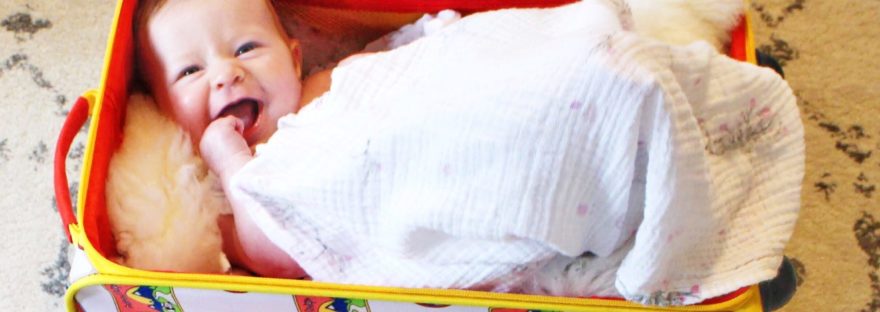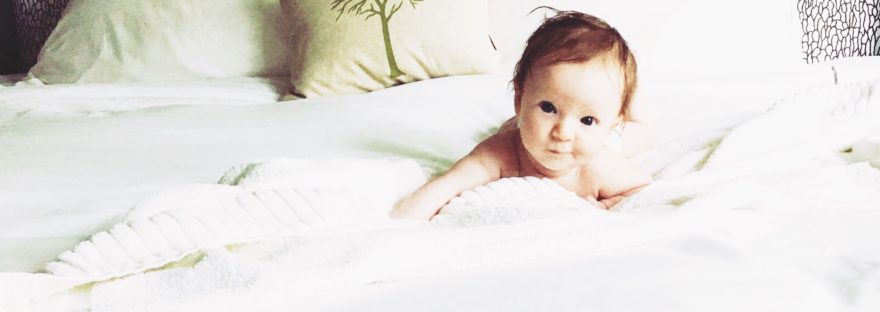Infants are some of the easiest travel companions– seriously! Some babies are more fussy than others, but compared to crawlers and walkers, infants are a whole lot easier to manage on flights IMHO. They don’t need snacks or Daniel Tiger, they sleep a lot, and they stay in one place. Aside from some necessary documentation, all infants really need for a flight is to be fed, clean, and warm.
Before having kids I would often pack for trips at the last moment— now, I start packing days in advance to alleviate any last-minute stress before leaving for airport (…for more about handy gear to pack, click here).
Here’s a quick checklist to help prepare before your first (or 30th) flight with a little one:
Birth Certificate. The rules are different for each airline but it’s always a good idea to have it on hand just in case. (Even for older babies/toddlers it’s a good idea to have ID on hand because many airlines require proof that the baby is under two for “lap child” status, even when it’s obvious).
Passport (if flying internationally). Apply well in advance (at least two months unless you want to pay extra to expedite). Baby passport photos are one of my favorite things.
Global Entry Card (if you use that service). While babies can piggyback on their parents’ TSA precheck, they must have their own Global Entry card to use the service when flying internationally. Babies must go through the interview process, which is kind of hilarious. It took longer to process and receive our baby’s card because she wasn’t able to be fingerprinted (too squirmy).
Proper Clothes. At least two extra outfits for baby plus a change of clothes for yourself. I suggest footie pajamas to keep baby warm on plane and so that you don’t have to worry about losing tiny socks. My two month old had a diaper blow-out in the first hour of a fourteen hour flight, so… changes of clothes are a necessity for both you and baby.
Blanket. We use lightweight muslin swaddles (like these ones by Aden and Anais– they’re not cheap but after being used by two babies and having countless washes they look brand new) to keep baby warm on flights, clean up spit up, and as a nursing cover.
Breastmilk or Formula (plus accompanying bottles and nipples). For more on feeding baby in flight, click here.
Diapers, wipes, and changing pad. You know your baby best and about how many diapers you’ll need, but pack for worst case scenario (i.e. stuck on tarmac for hours and then a missed connecting flight).
Hand Sanitizer (wipes or mini bottles) for yourself and to rub down your seat tray (most bacteria-ridden spot on plane) because baby’s immune system is immature.
Medicines in a ziploc bag. We pack Benadryl, Ibuprofen, and Tylenol. Don’t forget a measuring syringe. TSA will likely open the medicine to check it.
Pacifier and clips (and extras!) if your baby likes them. These are good for relieving ear pressure on take-off and landing, although nursing or drinking from bottle has same effect. We use pacifier clips so they don’t get lost/drop on dirty ground.
Plastic bag for dirty clothes or dirty diapers.
Sling or soft carrier for travel through the airport. I use a Boba, Solly or Wildbird Sling but they are all pretty comparable. This allows you to have two hands free to carry luggage, present your boarding pass and ID, etc. It also often keeps baby snuggly and calm/asleep.
On some long domestic flights and international flights you’re able to request a seat assignment with a bassinet for your infant (with a surcharge of course). We haven’t had the opportunity to do this, but think it would be a game changer on long flights.
If you’re flying with more than one “lap child” we think it’s worth choosing two seats that are across the aisle from one another. We do this for two reasons: a) some planes don’t have enough face masks to accomodate more than one baby in each row and therefore don’t allow two lap children in one row and b) this gives you a better chance of having at least one open seat next to you.
Okay parents with infants, what have I missed?



